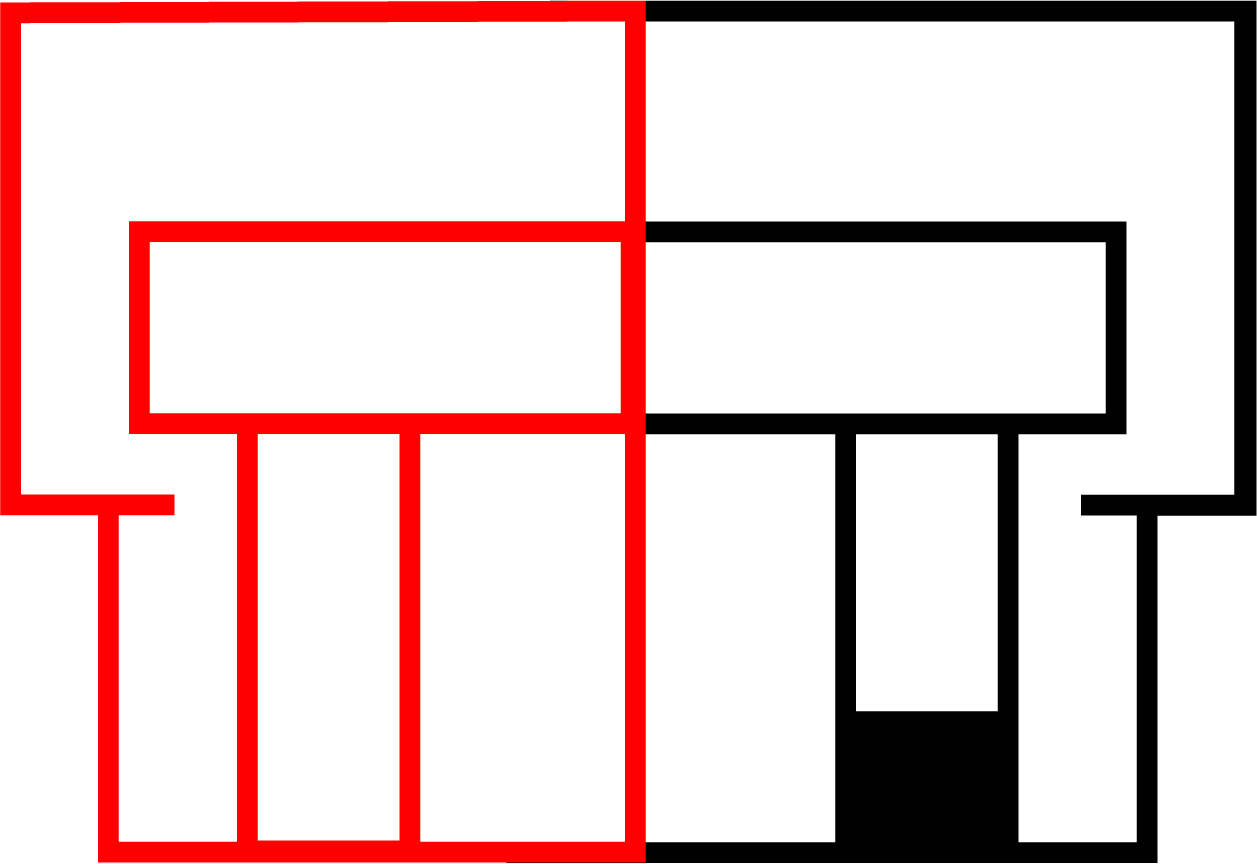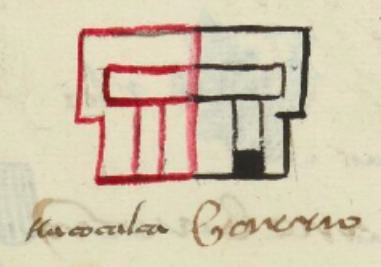Tlacocalcan (MH544v)
This black and red drawing of the compound glyph for the place name Tlacocalcan ("Where There is Half a House" or "Where There is Half a Building") shows two halves of houses (calli) or buildings. The one on the left is red, and the one on the right is black. The red seems to be in use to draw attention to the message of "half" (tlaco). The "-can" locative suffix (the place where) is not shown visually unless we count the building itself as a semantic locative.
Stephanie Wood
This may be the glyph that gave Joaquín Galarza the idea that the usual calli glyph is just a half of a building. But I still believe that normally, what appears to be a half building is a profile view of calli. We have plenty of evidence that the teopan and teocalli are shown in profile, given the usual placement of the stairs on the side. See for example, teocalli in the Codex Mendoza, folios 5 verso and 67 recto, compared to the frontal view with the stairs down the front on folio 10 recto.
Stephanie Wood
tlacocalco barrio
Tlacocalco, barrio
Stephanie Wood
1560
Jeff Haskett-Wood

Ellis Shing Nobles
barrios, calli, casas, edificios, mitad

tlaco, half, https://nahuatl.wired-humanities.org/content/tlaco
cal(li), house, building, https://nahuatl.wired-humanities.org/content/calli
can, locative suffix, https://nahuatl.wired-humanities.org/content/can-0
-can (locative suffix), https://nahuatl.wired-humanities.org/content/can-2
"Donde Hay Medio Edificio"
Matrícula de Huexotzinco, folio 544v, https://www.loc.gov/resource/gdcwdl.wdl_15282/?sp=168&st=image
This manuscript is hosted by the Library of Congress and the World Digital Library; used here with the Creative Commons, “Attribution-NonCommercial-ShareAlike 3.0 License” (CC-BY-NC-SAq 3.0).

